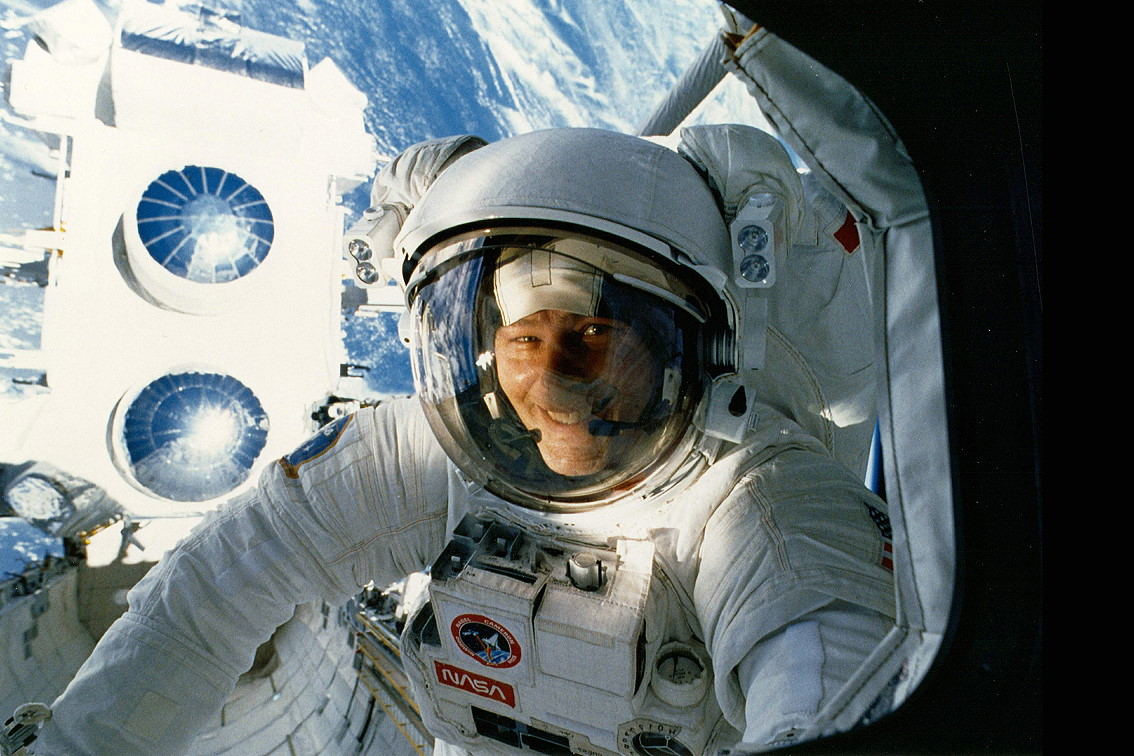
For a few hours in early April 1991, it seemed that things could not get any worse for NASA. A year earlier, the first of its flagship “Great Observatories”—the $1.5 billion Hubble Space Telescope (HST)—had been launched into orbit, but initial tests revealed its optics to have been improperly ground. In essence, the telescope was unable to resolve celestial objects with the kind of precision that NASA had advertised. A shuttle repair mission had long been on the cards, but the dismal failure caused considerable embarrassment for a space agency still recovering from the loss of Challenger.
The four Great Observatories were meant to offer fundamental insights into the nature and evolution of the Universe, across virtually the entire electromagnetic spectrum. Hubble would observe at visible and ultraviolet wavelengths, whilst the Advanced X-ray Astrophysics Facility (AXAF) would study X-rays and the Space Infrared Telescope Facility (SIRTF) would cover the infrared region. Yet in light of Hubble’s difficulties, in April 1991 NASA needed the second member of the fleet—the Gamma Ray Observatory (GRO)—to work perfectly and begin to deliver the scientific bonanza that it had pledged. Had it not been for the remarkable efforts of the crew of Shuttle Atlantis, 25 years ago this week, the second observatory’s future might have been seriously impaired.
The story of GRO begins a century ago, when a young U.S. scientist named Arthur Holly Compton made a significant breakthrough in X-ray and gamma ray physics: a discovery whose ramifications later earned him a Nobel Prize. Gamma rays represent some of the most energetic events in the Universe and typically arise from astrophysical processes which involve the production of very high-energy electrons. In fact, gamma rays have energies as high as 10 MeV. In 1923, Compton’s work on the interaction of high-energy radiation and matter played a crucial role in the development of modern physics. His subsequent research proved laid the cornerstone to our present understanding of how gamma rays are created. The “Compton effect” and “Compton scattering,” named in his honor, won him the Nobel Prize for Physics in 1927.
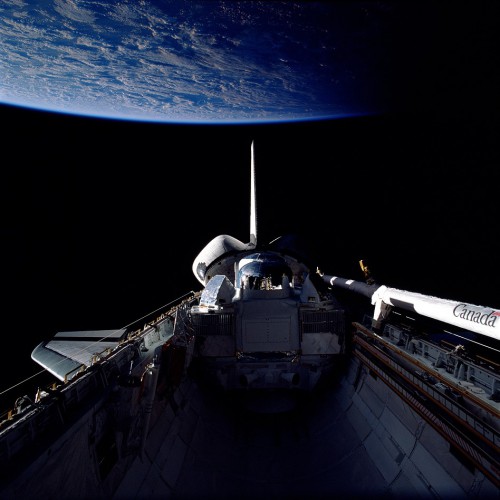
More than a half-century later, in September 1991, Compton’s name was bestowed upon the newly-launched GRO, whose own contributions to gamma ray astrophysics would also prove monumental. Its four instruments—developed by NASA, the European Space Agency (ESA), and contributing organizations in Germany, the Netherlands, and the United Kingdom—were tasked with supporting a minimum five-year mission. This included a 15-month Phase 1, in which an all-sky survey would be conducted, followed by a pair of phases which offered observing time to guest astronomers. As circumstances transpired, the observatory remained aloft and functional for more than eight years, before descending into Earth’s atmosphere and being destroyed in June 2000.
At the time of launch, GRO was the heaviest astronomical observatory ever placed into orbit: it weighed 35,000 pounds (15,900 kg), of which more than a third was taken up by its scientific payload. It reminded astronaut Jerry Ross of a futuristic diesel locomotive. “The thing was huge,” he told NASA’s Oral History Project. “Everything on it was real bulky, real thick, real heavy, and it was just very impressive of the stoutness of the satellite. Most times you go up to a satellite and you’re almost afraid to breathe on it, because it may fall apart on you!” Not so GRO. Its massive internal beams, which formed the central backbone of the spacecraft, were essential to supporting its large scientific instruments.
It could point itself at celestial targets for periods of days or weeks at a time, with an accuracy of just 0.5 degrees, and its hydrazine fuel supply was to be used not only for station-keeping, but also to execute a controlled re-entry at the end of the mission. This would prove critical when the time came for that re-entry in June 2000. Built by TRW, it carried a pair of accordion-like solar arrays and a set of nickel-cadmium batteries to provide electrical power. Moreover, it was designed to operate from an orbit of 280 miles (450 km), high enough to avoid excessive atmospheric drag and low enough to avoid the effects of the Earth’s Van Allen radiation belts, which might compromise its observations.
In the bulletproof days before Challenger, GRO was scheduled to be launched in May 1988, loaded with 4,000 pounds (1,800 kg) of hydrazine and plans were advanced to use a subsequent shuttle mission to refuel it. This would have marked the first time that a fully operational satellite had ever been refilled with propellant in space and hydrazine was known to be extremely toxic and volatile. Contracts to develop a coupling mechanism for a hydrazine transfer unit were awarded by NASA in December 1984, for completion and delivery just 15 months later. There were triple-redundant safety mechanisms in place, but it was some relief that the loss of Challenger ended all such plans. Six months after the shuttle returned to flight operations, in April 1989, NASA announced the names of five astronauts to deploy GRO on STS-37. They were scheduled to fly in April 1990, although hardware and other delays pushed their launch a year to the right and contributed to the addition of both a planned and an unplanned spacewalk.
In command was veteran astronaut Steve Nagel, who saw his role as getting himself and his crew ready to fly, although a tremendous weight of responsibility also lay on his shoulders, for the $630 million GRO was a major scientific payload. “If it goes well, you take the pats on the back,” he told the NASA oral historian, “but if it goes poorly, you take the blame.” Nagel had no input in the selection of his crew, but he was intimately involved in dividing up their duties. When it came to the issue of contingency EVAs, the one man who stood out was the only other veteran member, Jerry Ross, who already had two prior spacewalks under his belt.
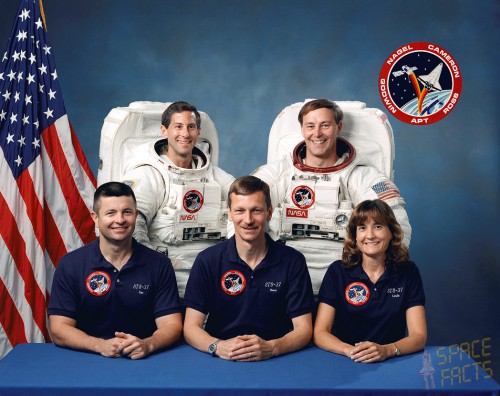
STS-37 was not supposed to include an EVA—it was to spend five days in orbit, deploy GRO on the third day and return home—but this situation changed markedly. “Everybody wants to do an EVA,” said Steve Nagel, “and I just used my own best judgement on that and try to give people what they want or have an aptitude for.” One crew member with limitless reserves of “aptitude” was Jay Apt, a civilian physicist who had worked on GRO in his pre-astronaut days as a NASA payload controller. The final members of the crew were a crew-cutted Marine named Ken Cameron as the pilot and another civilian physicist, Linda Godwin, who would be responsible for deploying GRO, using the shuttle’s robot arm.
As for GRO itself, the massive craft was delivered from TRW’s facility at Redondo Beach, Calif., to Los Angeles International Airport, atop a flatbed truck, in February 1990, and airlifted cross-country to Cape Canaveral a few days later. During launch, it would be unpowered, save for provisions to keep its star tracker shutters closed, and it was to be electrically activated within 90 minutes of reaching orbit. Twenty-one hours into the mission, an in-bay checkout of GRO would begin, running through everything, from command and telemetry to control systems and communications, and this would serve as a partial rehearsal for the actual deployment. On the third day of the mission, Godwin would lift GRO out of the bay with the shuttle’s Remote Manipulator System (RMS) mechanical arm and the observatory’s twin solar panels and high-gain antenna would unfold. She would then release the payload, which would power-up its systems over the following six hours and begin scientific operations within five days.
Whilst on the end of the RMS, the potential for anything to go wrong was vast: The solar arrays might not unfold correctly or the high-gain antenna might not open, and it was the responsibility of Ross and Apt to be in a position to perform a contingency EVA if necessary. In fact, Apt had worked extensively on GRO and one of his achievements was helping to implement contingency capabilities—including EVA-friendly handholds—onto the spacecraft. For much of 1989, the two men trained extensively in the Weightless Environment Training Facility (WET-F) at the Johnson Space Center (JSC) in Houston, Texas, but did not anticipate that a real spacewalk would come their way.
That changed early in the spring of 1990.
The second part of this article will appear tomorrow.
Be sure to “Like” AmericaSpace on Facebook and follow us on Twitter: @AmericaSpace




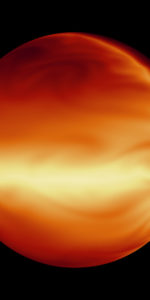
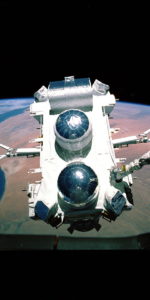
One Comment
One Ping
Pingback:‘Probably Earned My Keep’: 25 Years Since the Launch of the Compton Gamma Ray Observatory (Part 2) « AmericaSpace